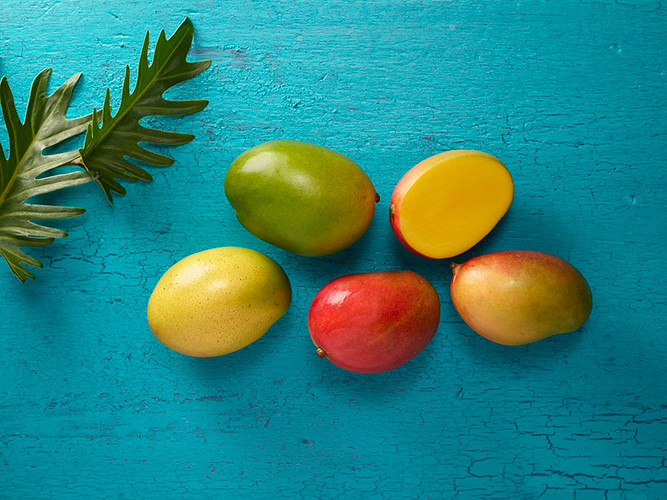- Botanically, mango is a drupe, consisting of an outer skin, a fleshy edible portion, and a central stone enclosing a single seed – also called stone fruit, like a plum, cherry or peach.
- Where do mangos come from? Mangos were first grown in India over 5,000 years ago.
- Mango seeds traveled with humans from Asia to the Middle East, East Africa and South America beginning around 300 or 400 A.D.
- The paisley pattern, developed in India, is based on the shape of a mango.
- A basket of mangos is considered a gesture of friendship in India.
- The mango is a symbol of love in India.
- Legend says that Buddha meditated under the cool shade of a mango tree.
- Mangos are related to cashews and pistachios.
- A ripe mango is known to be 14% sugar by weight and 0.5% acid by weight, with a sugar-acid ratio of 28.
- Spanish explorers brought mangos to South America and Mexico in the 1600’s. The first attempt to introduce the mango into the U.S. came in 1833 to Florida.
- The species name of the mango is Mangiferi indica, which means “an Indian plant bearing mangos.”
- Mango bark, leaves, skin, flesh and the pit have been used in folk remedies for centuries.
Download Fun Facts
